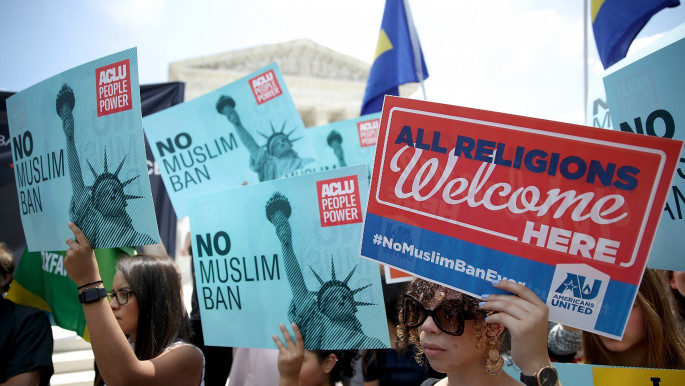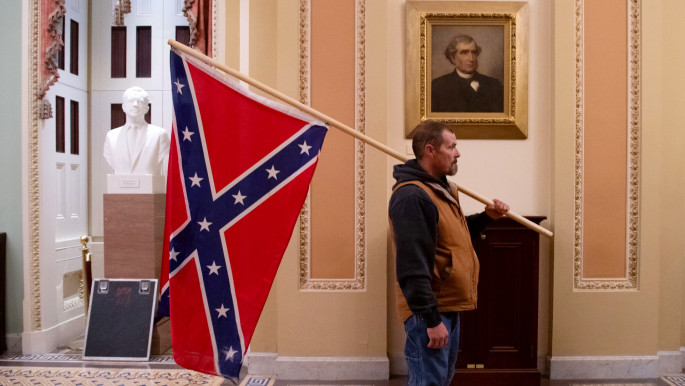America gets ready to welcome refugees again
"This announcement to renew American leadership is huge. It's a real beacon for hope," says JC Hendrickson, senior director for policy and advocacy at the International Rescue Committee. "It's refreshing to see refugee resettlement viewed through a humanitarian lens again."
Earlier this month, Joe Biden pledged to allocate a ceiling of 125,000 spots for refugees in the next fiscal year, a major shift from the last number issued by his predecessor Donald Trump of 15,000. Biden also signed an executive order to rebuild America's program of resettling refugees.
Some of the key points of the order appear to be a response to many years of frustration over an opaque bureaucracy that has more often been known for exclusion.
These include expanding the program to ensure that it's commensurate with global needs; noting that delays in humanitarian programs are against US national interests; treating applicants with dignity and without discrimination; making transparency and family reunification a priority; and ensuring humanitarian protection for America's Iraqi and Afghan allies.
 |
It's refreshing to see refugee resettlement viewed through a humanitarian lens again |  |
This comes at a time of urgent need, with the global population of refugees standing at nearly 80 million, the highest number on record per the United Nations High Commissioner for Refugees (UNHCR). Moreover, it also comes at a time when some countries in the West have reduced their rate of acceptance of refugees following a peak in the wake of the Arab Spring, notably Syrians to Germany around 2015.
America's refugee resettlement program, which turned 40 last year, is one of the most important means by which individuals displaced by persecution can start a new life and begin a path to US citizenship. The Refugee Act of 1980, passed at the end of Jimmy Carter's presidency, created a more organised process for what was already a long history of receiving those fleeing their countries of origin.
Under this system, the president designates an annual ceiling for refugees. Once approved, under a process that takes around one to two years, refugees are then assigned to state agencies, which provide them with food and housing and assist in job placement. Local volunteer groups, largely represented by churches, donate furniture, food and other essentials.
 |
|
| Read more: The Muslim travel ban is over. What happens now? |
"The Biden administration in many ways is returning to a trend that was in place before the previous administration," says Jim Neal, director of operations at Friends of Refugees, based in Clarkston in the Atlanta area. "It's grounded in good foreign policy and good domestic policy. Here in Georgia, we found that communities that received refugees said they want more."
Indeed, refugees – and immigrants in general – have long been an important part of America's social and economic makeup. New arrivals often account for an important share of employees in agriculture, factories, and they often open restaurants in their new communities. The ongoing pandemic has also brought to light their disproportionately high share of frontline workers.
Neal recalls a meeting he attended in which a participant asked how they respond to those who claim that refugees took up resources, to which an Iraqi dentist (who had also been helping administer coronavirus testing) responded, "We don't take up resources. We are the resources."
"In a community like Clarkston, we're eager and happy to see more refugees. Many go on to become citizens. They're super-citizens," says Neal, referring to the high rate of success among refugees, which also tends to benefit those around them.
"They build communities. The first generation has their struggle, and the second generation is able to do more," says Neal. "Here is Georgia, they're 88 to 92 percent self-sufficient in six months. That's the resiliency of refugees."
 |
Refugees - and immigrants in general - have long been an important part of America's social and economic makeup |  |
As much as the new refugee policy is being well received, there is no illusion that it will be quickly implemented. The pandemic is far from under control, and positions that were previously filled with specialists trained to process applications will need to be restaffed.
"One of the things that's tricky is it will take time to rebuild. The refugee program is one of the most heavily vetted in the US. With the hollowing out of the program, it will take time to build back up to have people ready to meet the goals," says Hendrickson.
Moreover, one of the ways to build public and political support for refugees is to change the narrative about them.
 |
|
| Read more: Is this the end of Trumpism or the beginning of an American insurgency? |
Suzanne Meriden, executive director of the Syrian American Council, has hosted press events in states where governors were trying to prevent Syrian refugees from entry when Barack Obama was trying to increase the ceiling for refugee arrivals. She has also brought Syrian refugees to offices at the Capitol to meet representatives.
"When they walk into the congressional building, they feel like they have dignity and respect," says Meriden, contrasting their reception in the US with their experience with the government back in Syria.
"Biden will open up these paths for folks to come in. It's going to happen, but it's going to happen slowly," she says. Meanwhile, she suggests Americans think about how they can help refugees once they arrive. For many, that moment can't come soon enough.
"We're excited that the administration has set ambitious resettlement goals. It recognises the global need of 80 million displaced people," says Hendrickson. "We're excited to scale up and work with the government. The need has been increasing worldwide as the US has been chipping away at the program. It's been really tough to see. But here we are, ready to get back to a different way of doing things."
Brooke Anderson is a freelance journalist covering international politics, business and culture
Follow her on Twitter: @Brookethenews





 Follow the Middle East's top stories in English at The New Arab on Google News
Follow the Middle East's top stories in English at The New Arab on Google News


